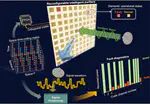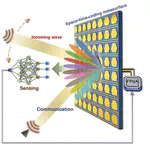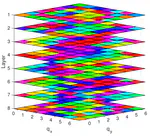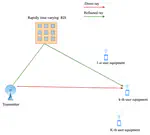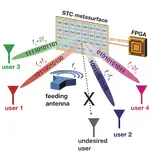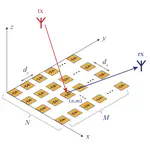STREET
SmarT electRomagnEtic EnvironmenTs
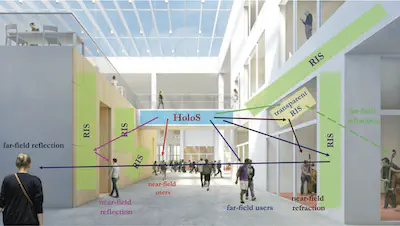
The current vision of next-generation (6G and beyond) wireless communication systems relies on a proactive reconfiguration of the radio propagation environment in order to increase the system capacity and improve coverage of cellular networks. This can be attained by means of “reconfigurable intelligent surfaces” (RISs), which can re-radiate and receive the electromagnetic signal in a tailorable fashion, while remaining environmentally friendly, easy to deploy, and compatible with existing transmissions.
When operating passively, RISs have an extremely low power consumption and process electromagnetic signals directly at the speed of light, dramatically reducing latency and complexity with respect to corresponding fully-digital solutions. Active solutions instead provide higher data rates at the expense of more complex technological solutions and higher power consumption. Moreover, the extreme spatial resolution given by the large size of these structures will enable unprecedented spatial multiplexing capabilities. This can also be exploited for combined communication and sensing solutions, to support innovative end-user applications. Accordingly, they represent one of the most promising technologies for 6G networks.
In an ongoing collaborative effort aimed at fully investigating and capitalizing the potentials of RIS technology, we have undertaken an interdisciplinary approach, merging competencies on signal processing, optimization tools, information theory, electromagnetic modeling and design.
Collaborations
- Prof. Marco Di Renzo, Paris-Saclay University / CNRS, France
- Prof. Gabriele Gradoni, University of Surrey, UK
- Prof. Tie Jun Cui, Southeast University, China
- Prof. Lianlin Li, Peking University, China
- Prof. Donatella Darsena, University of Naples “Federico II”, Italy
- Prof. Francesco Verde, University of Campania “Luigi Vanvitelli”, Italy
- Dr. Ivan Iudice, Italian Aerospace Research Centre, Italy

